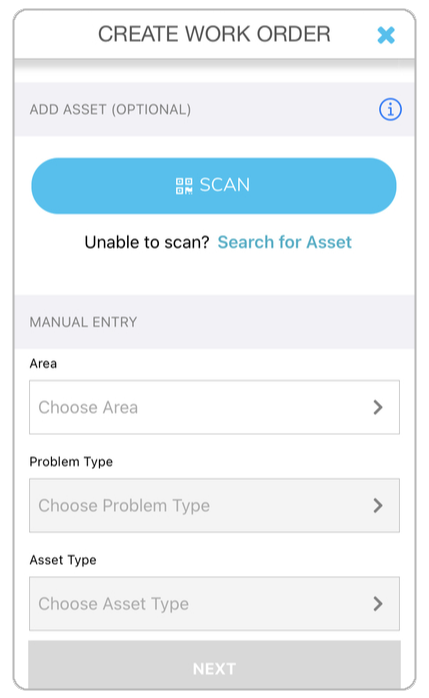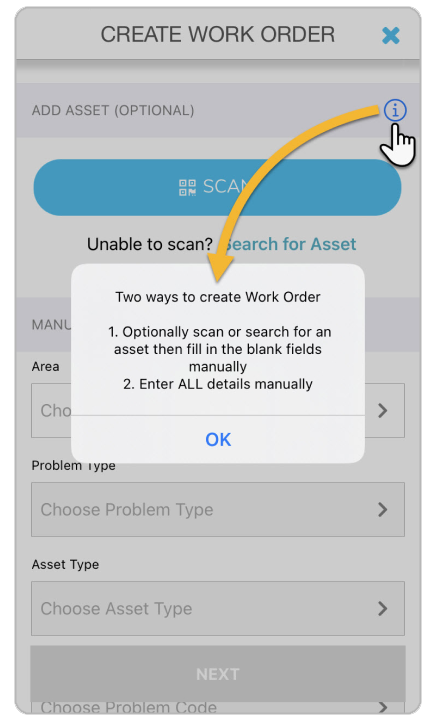- On the work orders list screen, tap Create.
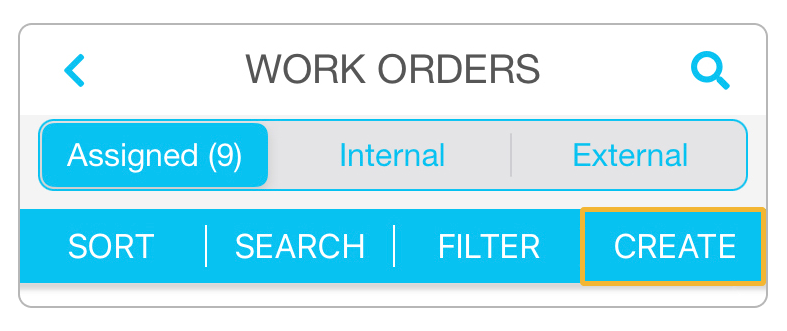
Select the location where the issue is taking place.
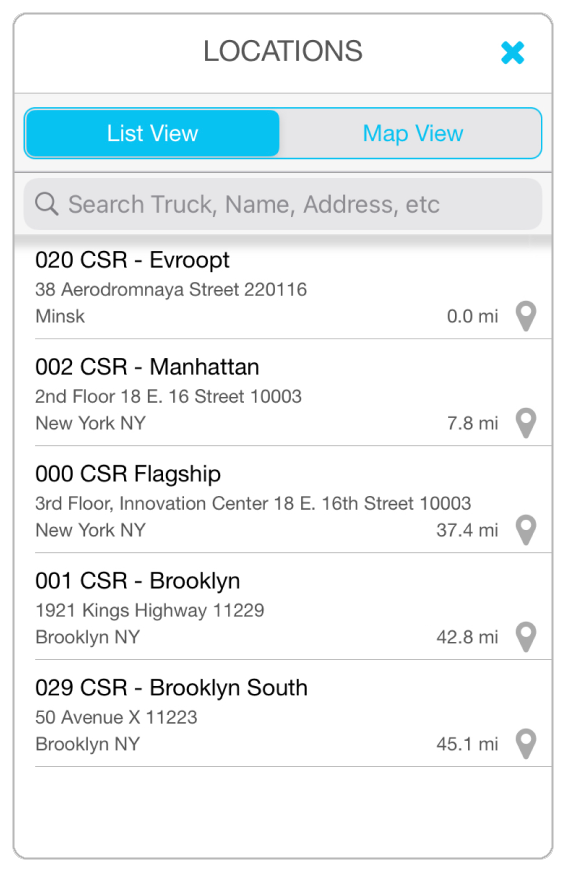
- On the Create Work Order screen, you may be given the following two options to create a work order:
- By scanning an asset that requires repairs: Learn more about Scanning an Asset Upon Creating a Work Order.
By entering the problem description manually: The steps below will describe how you can manually provide all the work order details.
Tap the drop-down menus (one by one) to choose the appropriate Area, Problem Type, Asset Type, and Problem Code.
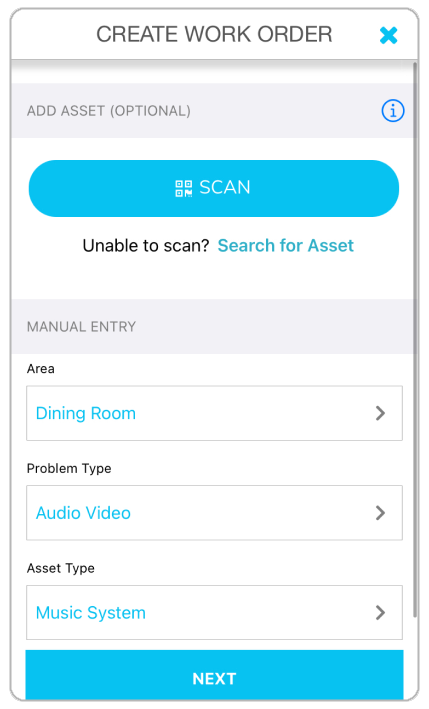
- Tap Next.
- Should the Duplicates screen appear, this means a work order was already entered for the issue you are currently creating. Tap the work order to review the details.
- (When the issue is a duplicate) Tap Cancel WO. The work order is not created; you are returned to the work order list for that location.
- (When the issue is NOT a duplicate) Tap Next to continue creating a work order.
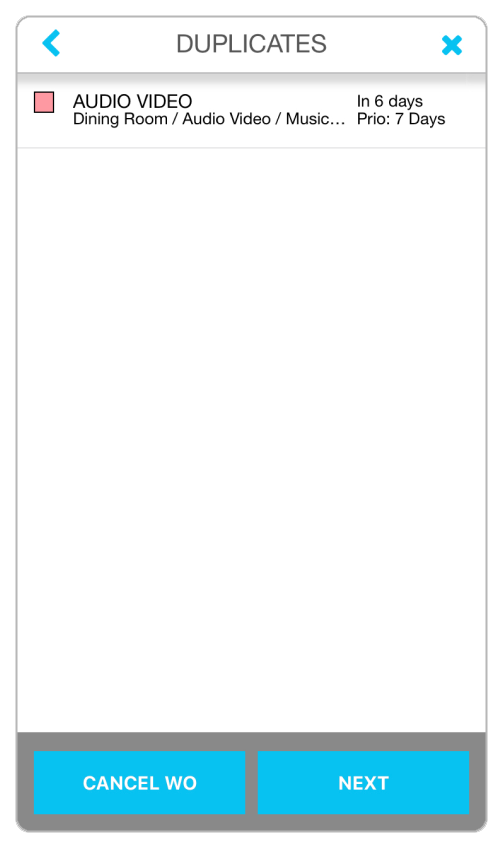
- (Where applicable) On the Troubleshooting screen, enter the relevant information in the text box. Fully describe the problem so the service provider is as knowledgeable about your request as possible.
- Answer any Interactive Troubleshooting questions you encounter to assist in detailing the issue.
- Should a Message appear, you cannot continue entering the work order. Follow the instructions on the screen, where applicable, and tap Cancel WO.
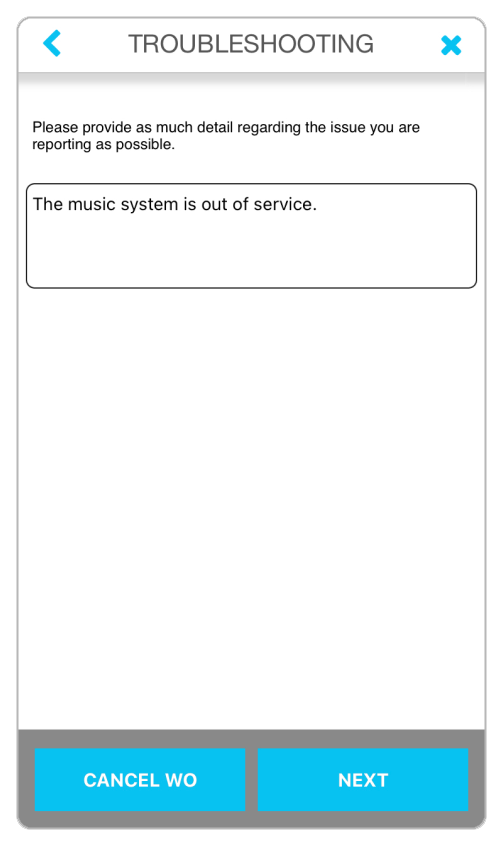
Tap Next. The Add Note screen appears. You can add any additional information to the problem description on this screen as you see fit.
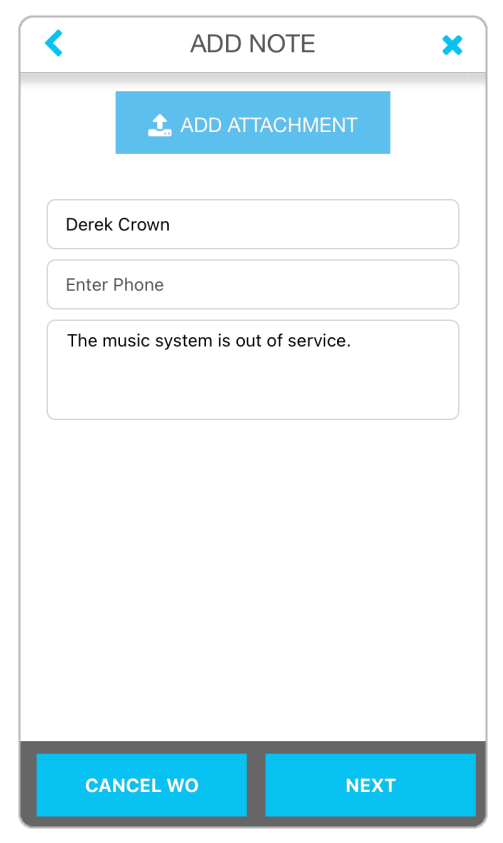
- (Optional) Tap Add Attachment to either take a new photo or video of the issue or upload a photo or video of the issue you have already taken.
- (Optional) Enter your phone number in the text field.
- Tap Next. The Confirm Information screen appears.
- Review the service request for accuracy, and then tap Confirm / Create WO.
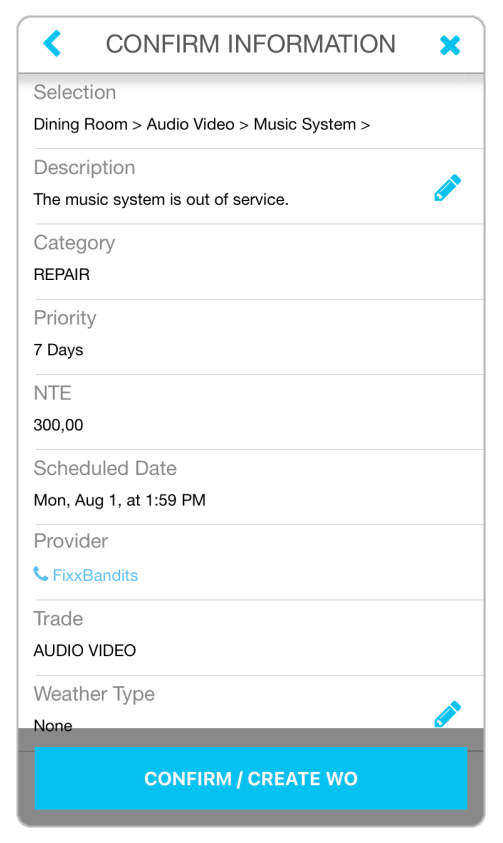
The work order is generated and dispatched to the assigned service provider. You will see a pop-up window indicating the tracking number.
13. Tap Close.


